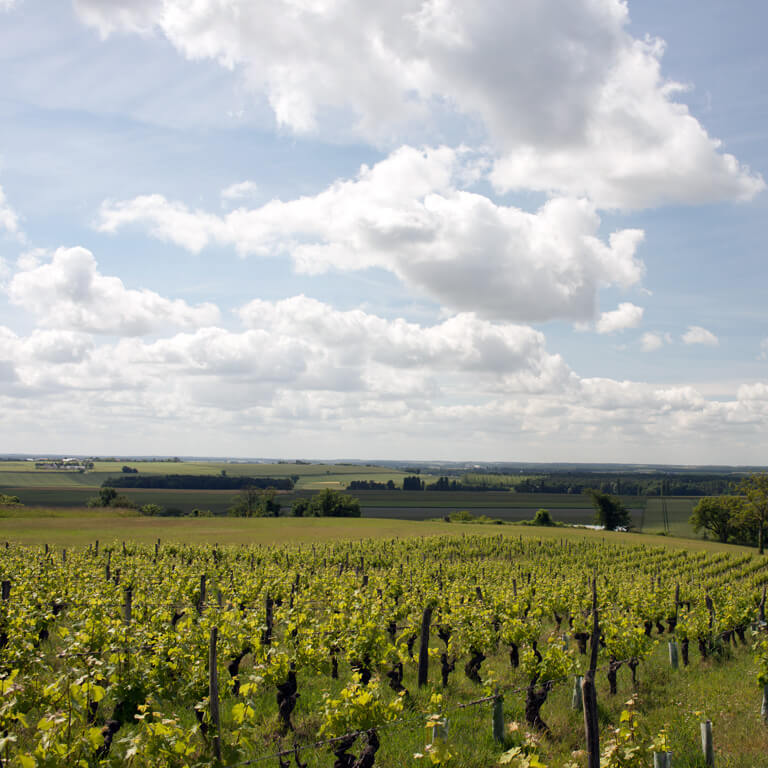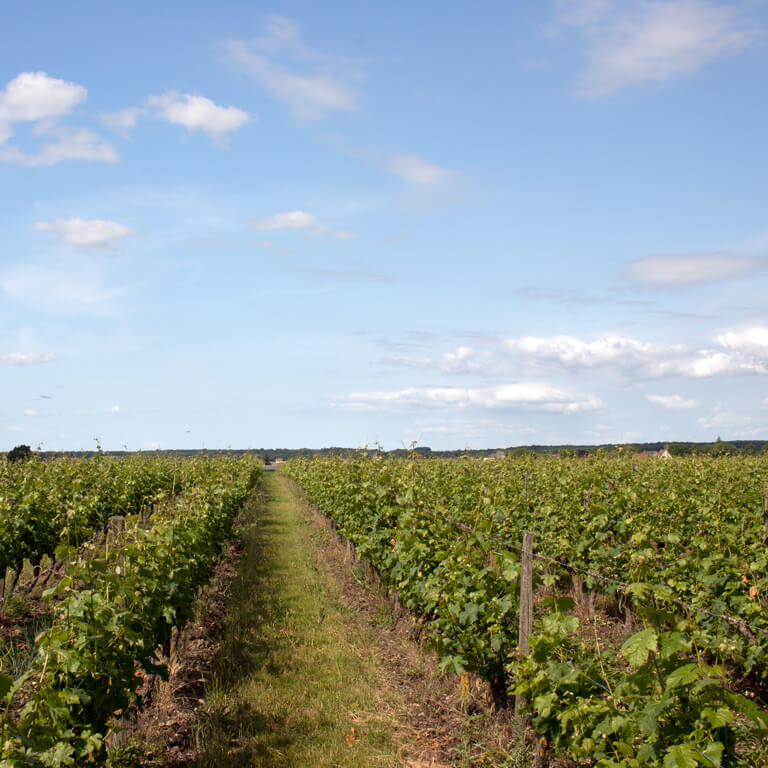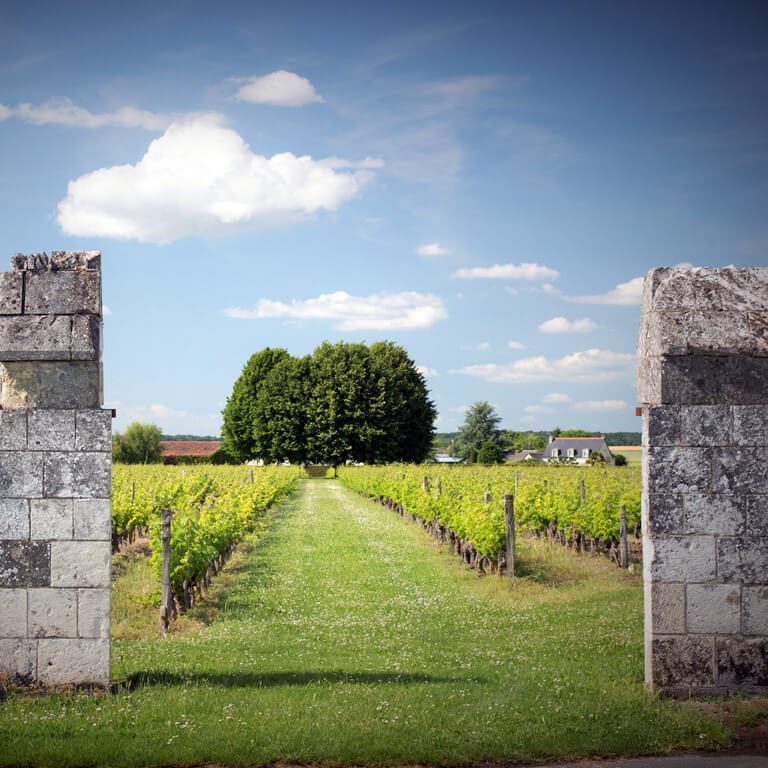The vineyard bordering on the Château de Marçay has been cultivated for over 200 years and has hallmarked the history of the village.
The vineyard was planted North – South for ideal exposure on Marçay’s unique terroir. Beneath some 30 cm of chalk-clay subsoil, the vines penetrate deeply into the soft, creamy tufa stone to find water and all the nutritive elements they need to prosper.
Marçay’s 6 hectares of vineyard also benefits from an exceptionally favorable climate. Located between the southern plateau of the Haut Poitou and the sloping banks of the Loire and Vienne rivers to the North, Marçay is naturally protected by thesurrounding heights. As Marçay’s only vignerons, Pascal and Mathieu Avril feel a particular attachment to Marçay’s vineyard, and they are always pleased and rather proud to present its beauty and qualities to visitors who express their interest. Their keen observation of the terrain in order to preserve the natural balance and biodiversity and their meticulous care of the vineyard according to its needs are complemented with trials of new cultural techniques such as growing vegetables and using horse-drawn tools in the vines.


